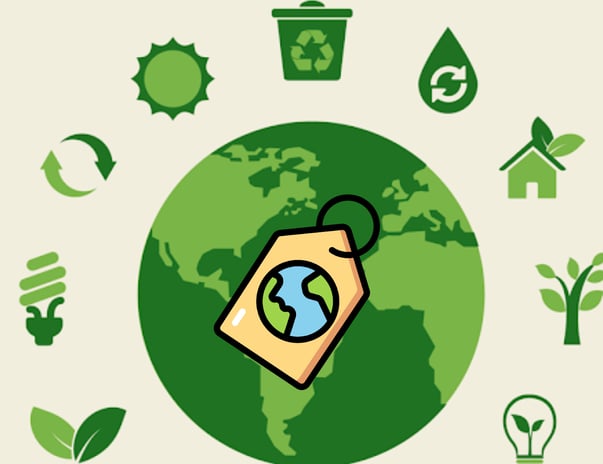USE CODE "YOURAAROMA" and get 10% off
Top 5 Sustainable Materials for Labels and Tags in 2024
3 min read


Top 5 Sustainable Materials for Labels and Tags in 2024
In an era where sustainability is more than just a buzzword, businesses are constantly seeking innovative ways to reduce their environmental footprint. One often-overlooked area is the materials used for labels and tags. These small components play a significant role in packaging and branding but can also contribute to waste. Fortunately, 2024 brings a range of sustainable options that can help businesses make a greener choice. Here are the top five sustainable materials for labels and tags this year.
1. Recycled Paper
Recycled paper remains a stalwart in the realm of sustainable labeling. Made from post-consumer waste, recycled paper helps divert waste from landfills and reduces the need for virgin paper production, which is a significant driver of deforestation. Advances in recycling technology have enhanced the quality and durability of recycled paper, making it a versatile choice for labels and tags. Moreover, using recycled paper can significantly lower a company’s carbon footprint, as producing recycled paper uses less energy and water compared to new paper.
Benefits:
- Reduces deforestation
- Lowers energy and water consumption
- Diverts waste from landfills
2. Bamboo Fiber
Bamboo is a fast-growing, renewable resource that has gained popularity for various applications, including labels and tags. Bamboo fibers are strong, durable, and biodegradable, making them an excellent sustainable alternative to traditional materials. The cultivation of bamboo is also environmentally friendly, as it requires minimal water and no pesticides. Its rapid growth rate allows for frequent harvesting without depleting the plant population.
Benefits:
- Fast-growing and renewable
- Biodegradable
- Minimal water and pesticide use
3. Hemp Paper
Hemp paper is making a comeback as a sustainable choice for labels and tags. Hemp grows quickly, with a crop cycle of just four months, and it can be cultivated in diverse climates. It requires fewer chemicals and less water than traditional paper crops like wood pulp. Hemp fibers are long and strong, resulting in a durable paper product that is perfect for labels and tags. Additionally, hemp paper is naturally acid-free, which helps to preserve the integrity of the label over time.
Benefits:
- Rapid growth cycle
- Requires fewer chemicals and less water
- Durable and acid-free
4. PLA (Polylactic Acid) Bioplastic
PLA bioplastic, derived from renewable resources such as corn starch or sugarcane, offers a sustainable alternative to traditional petroleum-based plastics. PLA is compostable under industrial conditions and can break down into natural components without leaving toxic residues. For labels and tags, PLA provides the durability and flexibility of plastic while significantly reducing environmental impact. However, it’s essential to ensure proper composting facilities are available to manage PLA waste effectively.
Benefits:
- Derived from renewable resources
- Compostable and biodegradable
- Reduces reliance on petroleum-based plastics
5. Stone Paper
Stone paper is an innovative material made from calcium carbonate bonded with a small amount of high-density polyethylene (HDPE). It is waterproof, tear-resistant, and requires no water, bleach, or acid in its production. Stone paper’s production process generates significantly less CO2 compared to traditional paper manufacturing. While not entirely biodegradable due to its HDPE content, stone paper is recyclable, and its durability means it can be reused multiple times before recycling.
Benefits:
- Waterproof and tear-resistant
- Requires no water or bleach in production
- Generates less CO2 during manufacturing
Conclusion
As businesses strive to adopt more sustainable practices, choosing eco-friendly materials for labels and tags is a small yet impactful step. Recycled paper, bamboo fiber, hemp paper, PLA bioplastic, and stone paper are leading the way in 2024, offering various benefits that cater to different needs and preferences. By opting for these sustainable materials, companies can not only reduce their environmental impact but also appeal to a growing base of eco-conscious consumers. Embracing these innovative solutions is not just good for the planet—it’s good for business.
